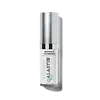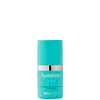What's inside
What's inside
 Key Ingredients
Key Ingredients

 Benefits
Benefits

 Concerns
Concerns

 Ingredients Side-by-side
Ingredients Side-by-side

Water
Skin ConditioningGlycerin
HumectantCaprylic/Capric Triglyceride
MaskingCetearyl Alcohol
EmollientDimethicone
EmollientPentylene Glycol
Skin ConditioningJojoba Esters
EmollientCetearyl Glucoside
EmulsifyingGlyceryl Stearate
EmollientNiacinamide
SmoothingPEG-100 Stearate
Palmitoyl Hexapeptide-12
Skin ConditioningPalmitoyl Tripeptide-1
Skin ConditioningTetrapeptide-30
Skin ConditioningAlbizia Julibrissin Bark Extract
MaskingGallyl Glucoside
AntioxidantSodium Hyaluronate
HumectantEpigallocatechin Gallatyl Glucoside
AntioxidantDarutoside
Skin ConditioningDunaliella Salina Extract
Skin ConditioningOrnithine
Skin ConditioningPhospholipids
Skin ConditioningButyrospermum Parkii Butter Extract
Skin ConditioningGlycolipids
Skin ConditioningBetaine
HumectantTremella Fuciformis Sporocarp Extract
AntioxidantBeta-Glucan
Skin ConditioningSilica
AbrasiveHdi/Trimethylol Hexyllactone Crosspolymer
Propanediol
SolventSqualane
EmollientPolysorbate 20
EmulsifyingPolyacrylate-13
Xanthan Gum
Emulsifying1,2-Hexanediol
Skin ConditioningBenzyl Alcohol
PerfumingDehydroacetic Acid
PreservativeHelianthus Annuus Seed Oil
EmollientLevulinic Acid
PerfumingP-Anisic Acid
MaskingPotassium Sorbate
PreservativeSodium Benzoate
MaskingSodium Hydroxide
BufferingSorbitan Isostearate
EmulsifyingTocopherol
AntioxidantDisodium EDTA
Caprylyl Glycol
EmollientPolyisobutene
Caprylhydroxamic Acid
Phenoxyethanol
PreservativePropyl Gallate
AntioxidantEthylhexylglycerin
Skin ConditioningWater, Glycerin, Caprylic/Capric Triglyceride, Cetearyl Alcohol, Dimethicone, Pentylene Glycol, Jojoba Esters, Cetearyl Glucoside, Glyceryl Stearate, Niacinamide, PEG-100 Stearate, Palmitoyl Hexapeptide-12, Palmitoyl Tripeptide-1, Tetrapeptide-30, Albizia Julibrissin Bark Extract, Gallyl Glucoside, Sodium Hyaluronate, Epigallocatechin Gallatyl Glucoside, Darutoside, Dunaliella Salina Extract, Ornithine, Phospholipids, Butyrospermum Parkii Butter Extract, Glycolipids, Betaine, Tremella Fuciformis Sporocarp Extract, Beta-Glucan, Silica, Hdi/Trimethylol Hexyllactone Crosspolymer, Propanediol, Squalane, Polysorbate 20, Polyacrylate-13, Xanthan Gum, 1,2-Hexanediol, Benzyl Alcohol, Dehydroacetic Acid, Helianthus Annuus Seed Oil, Levulinic Acid, P-Anisic Acid, Potassium Sorbate, Sodium Benzoate, Sodium Hydroxide, Sorbitan Isostearate, Tocopherol, Disodium EDTA, Caprylyl Glycol, Polyisobutene, Caprylhydroxamic Acid, Phenoxyethanol, Propyl Gallate, Ethylhexylglycerin
Water
Skin ConditioningCaprylic/Capric Triglyceride
MaskingC12-20 Acid PEG-8 Ester
EmulsifyingGlycerin
HumectantButylene Glycol
HumectantCetyl Alcohol
EmollientPEG-8
HumectantBisabolol
MaskingCaffeine
Skin ConditioningTetrahexyldecyl Ascorbate
AntioxidantFagus Sylvatica Bud Extract
TonicLecithin
EmollientCutaneous Lysate
MoisturisingTetrapeptide-21
Skin ConditioningSodium Hyaluronate
HumectantGlycyrrhetinic Acid
Skin ConditioningTocopherol
AntioxidantCitric Acid
BufferingCapryloyl Carnosine
Skin ConditioningAscorbyl Palmitate
AntioxidantTocotrienols
Skin ConditioningElaeis Guineensis Oil
EmollientPalmitoyl Tripeptide-1 Acetate
Skin ConditioningAscorbic Acid
AntioxidantBenzoic Acid
MaskingSqualene
EmollientPhytosterols
Skin ConditioningSodium Citrate
BufferingPotassium Cetyl Phosphate
EmulsifyingPotassium Sorbate
PreservativeCaprylyl Glycol
EmollientCarbomer
Emulsion StabilisingHexylene Glycol
EmulsifyingSaccharide Isomerate
HumectantSodium Polyacrylate
AbsorbentSodium Hydroxide
BufferingDisodium EDTA
Phenoxyethanol
PreservativeBenzyl Alcohol
PerfumingWater, Caprylic/Capric Triglyceride, C12-20 Acid PEG-8 Ester, Glycerin, Butylene Glycol, Cetyl Alcohol, PEG-8, Bisabolol, Caffeine, Tetrahexyldecyl Ascorbate, Fagus Sylvatica Bud Extract, Lecithin, Cutaneous Lysate, Tetrapeptide-21, Sodium Hyaluronate, Glycyrrhetinic Acid, Tocopherol, Citric Acid, Capryloyl Carnosine, Ascorbyl Palmitate, Tocotrienols, Elaeis Guineensis Oil, Palmitoyl Tripeptide-1 Acetate, Ascorbic Acid, Benzoic Acid, Squalene, Phytosterols, Sodium Citrate, Potassium Cetyl Phosphate, Potassium Sorbate, Caprylyl Glycol, Carbomer, Hexylene Glycol, Saccharide Isomerate, Sodium Polyacrylate, Sodium Hydroxide, Disodium EDTA, Phenoxyethanol, Benzyl Alcohol
 Reviews
Reviews

Ingredients Explained
These ingredients are found in both products.
Ingredients higher up in an ingredient list are typically present in a larger amount.
Benzyl Alcohol is most commonly used as a preservative. It also has a subtle, sweet smell. Small amounts of Benzyl Alcohol is not irritating and safe to use in skincare products. Most Benzyl Alcohol is derived from fruits such as apricots.
Benzyl Alcohol has both antibacterial and antioxidant properties. These properties help lengthen the shelf life of products. Benzyl Alcohol is a solvent and helps dissolve other ingredients. It can also improve the texture and spreadability.
Alcohol comes in many different forms. Different types of alcohol will have different effects on skin. This ingredient is an astringent alcohol.
Using high concentrations of these alcohols are drying on the skin. They may strip away your skin's natural oils and even damage your skin barrier. Astringent alcohols may also irritate skin.
Other types of astringent alcohols include:
According to the National Rosacea Society based in the US, you should be mindful of products with these alcohols in the top half of ingredients.
Any type of sanitizing product will have high amounts of alcohol to help kill bacteria and viruses.
Learn more about Benzyl AlcoholThis ingredient is an emollient, solvent, and texture enhancer. It is considered a skin-softener by helping the skin prevent moisture loss.
It helps thicken a product's formula and makes it easier to spread by dissolving clumping compounds.
Caprylic Triglyceride is made by combining glycerin with coconut oil, forming a clear liquid.
While there is an assumption Caprylic Triglyceride can clog pores due to it being derived from coconut oil, there is no research supporting this.
Learn more about Caprylic/Capric TriglycerideCaprylyl Glycol is a humectant and emollient, meaning it attracts and preserves moisture.
It is a common ingredient in many products, especially those designed to hydrate skin. The primary benefits are retaining moisture, skin softening, and promoting a healthy skin barrier.
Though Caprylyl Glycol is an alcohol derived from fatty acids, it is not the kind that can dry out skin.
This ingredient is also used as a preservative to extend the life of products. It has slight antimicrobial properties.
Learn more about Caprylyl GlycolDisodium EDTA plays a role in making products more stable by aiding other preservatives.
It is a chelating agent, meaning it neutralizes metal ions that may be found in a product.
Disodium EDTA is a salt of edetic acid and is found to be safe in cosmetic ingredients.
Learn more about Disodium EDTAGlycerin is already naturally found in your skin. It helps moisturize and protect your skin.
A study from 2016 found glycerin to be more effective as a humectant than AHAs and hyaluronic acid.
As a humectant, it helps the skin stay hydrated by pulling moisture to your skin. The low molecular weight of glycerin allows it to pull moisture into the deeper layers of your skin.
Hydrated skin improves your skin barrier; Your skin barrier helps protect against irritants and bacteria.
Glycerin has also been found to have antimicrobial and antiviral properties. Due to these properties, glycerin is often used in wound and burn treatments.
In cosmetics, glycerin is usually derived from plants such as soybean or palm. However, it can also be sourced from animals, such as tallow or animal fat.
This ingredient is organic, colorless, odorless, and non-toxic.
Glycerin is the name for this ingredient in American English. British English uses Glycerol/Glycerine.
Learn more about GlycerinPhenoxyethanol is a preservative that has germicide, antimicrobial, and aromatic properties. Studies show that phenoxyethanol can prevent microbial growth. By itself, it has a scent that is similar to that of a rose.
It's often used in formulations along with Caprylyl Glycol to preserve the shelf life of products.
Potassium Sorbate is a preservative used to prevent yeast and mold in products. It is commonly found in both cosmetic and food products.
This ingredient comes from potassium salt derived from sorbic acid. Sorbic acid is a natural antibiotic and effective against fungus.
Both potassium sorbate and sorbic acid can be found in baked goods, cheeses, dried meats, dried fruit, ice cream, pickles, wine, yogurt, and more.
You'll often find this ingredient used with other preservatives.
Learn more about Potassium SorbateSodium Hyaluronate is hyaluronic acid's salt form. It is commonly derived from the sodium salt of hyaluronic acid.
Like hyaluronic acid, it is great at holding water and acts as a humectant. This makes it a great skin hydrating ingredient.
Sodium Hyaluronate is naturally occurring in our bodies and is mostly found in eye fluid and joints.
These are some other common types of Hyaluronic Acid:
Learn more about Sodium HyaluronateSodium Hydroxide is also known as lye or caustic soda. It is used to adjust the pH of products; many ingredients require a specific pH to be effective.
In small amounts, sodium hydroxide is considered safe to use. However, large amounts may cause chemical burns due to its high alkaline.
Your skin has a natural pH and acid mantle. This acid mantle helps prevent harmful bacteria from breaking through. The acid mantle also helps keep your skin hydrated.
"Alkaline" refers to a high pH level. A low pH level would be considered acidic.
Learn more about Sodium HydroxideTocopherol (also known as Vitamin E) is a common antioxidant used to help protect the skin from free-radicals and strengthen the skin barrier. It's also fat soluble - this means our skin is great at absorbing it.
Vitamin E also helps keep your natural skin lipids healthy. Your lipid skin barrier naturally consists of lipids, ceramides, and fatty acids. Vitamin E offers extra protection for your skin’s lipid barrier, keeping your skin healthy and nourished.
Another benefit is a bit of UV protection. Vitamin E helps reduce the damage caused by UVB rays. (It should not replace your sunscreen). Combining it with Vitamin C can decrease sunburned cells and hyperpigmentation after UV exposure.
You might have noticed Vitamin E + C often paired together. This is because it is great at stabilizing Vitamin C. Using the two together helps increase the effectiveness of both ingredients.
There are often claims that Vitamin E can reduce/prevent scarring, but these claims haven't been confirmed by scientific research.
Learn more about TocopherolWater. It's the most common cosmetic ingredient of all. You'll usually see it at the top of ingredient lists, meaning that it makes up the largest part of the product.
So why is it so popular? Water most often acts as a solvent - this means that it helps dissolve other ingredients into the formulation.
You'll also recognize water as that liquid we all need to stay alive. If you see this, drink a glass of water. Stay hydrated!
Learn more about Water